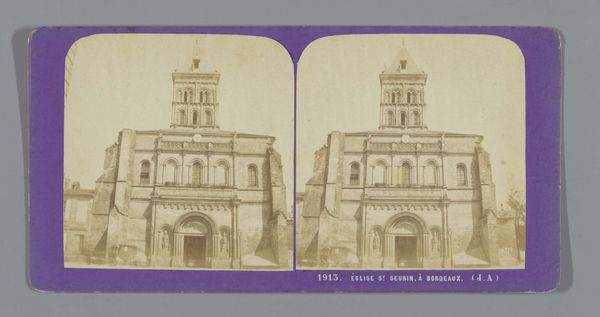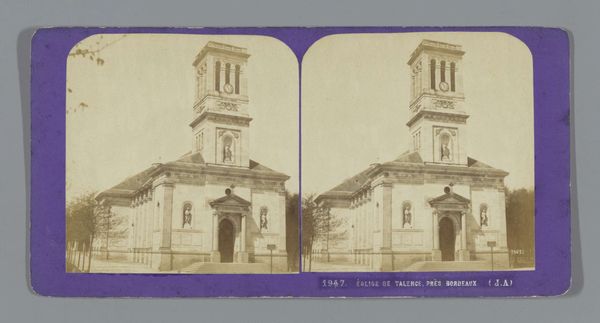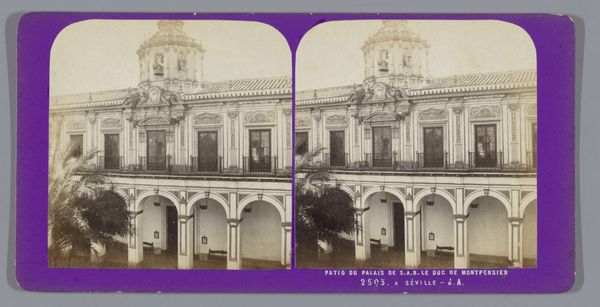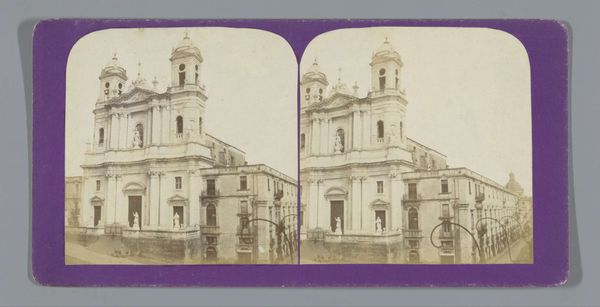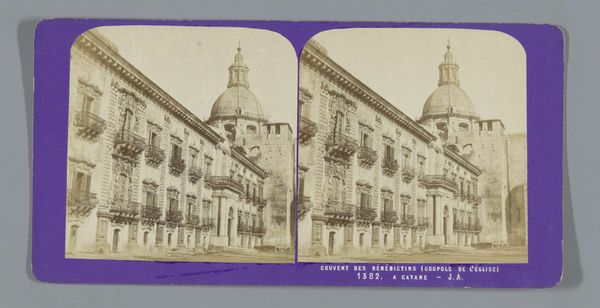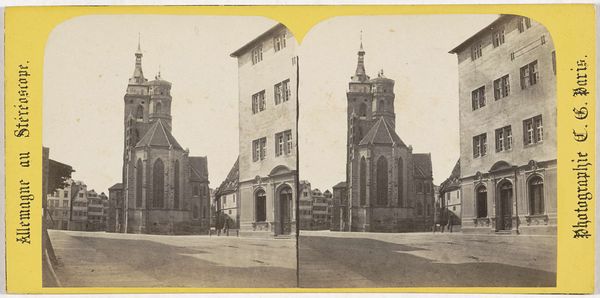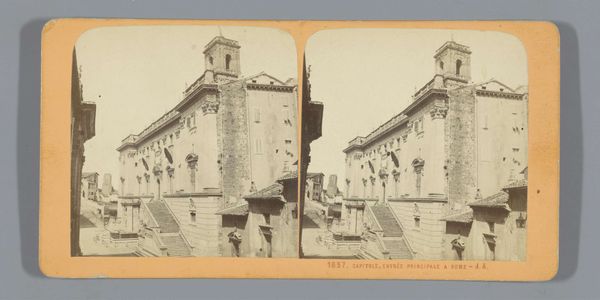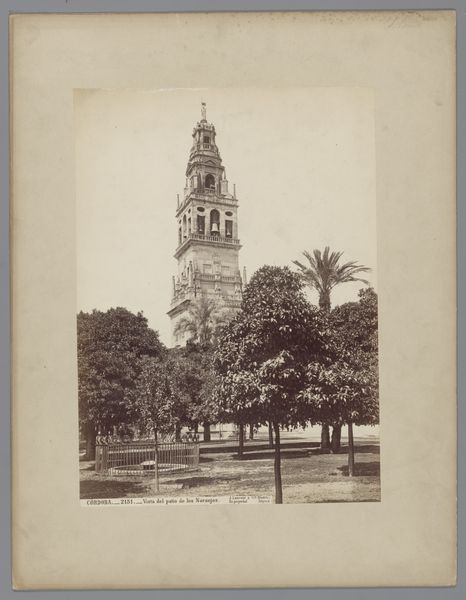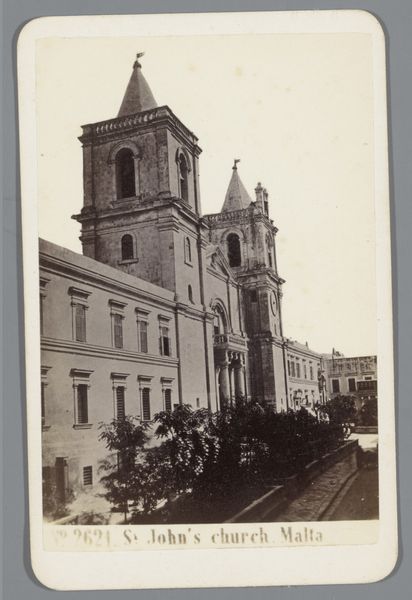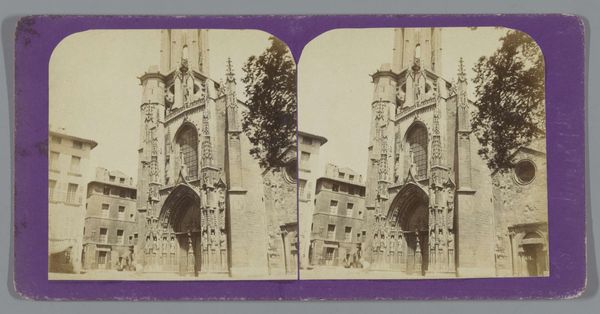
print, photography
# print
#
landscape
#
photography
#
coloured pencil
#
orientalism
#
cityscape
Dimensions: height 85 mm, width 170 mm
Copyright: Rijks Museum: Open Domain
Editor: This is a photograph entitled "Gezicht op de klokkentoren van de Mezquita in Córdoba" by Jean Andrieu, taken sometime between 1862 and 1876. It’s… well, it’s quite striking! There's this looming tower dominating the frame, creating this real sense of historical weight and imposing architecture. The repetitive arches of the mosque create almost a rhythmic pattern leading up to the bell tower, but the image is very... monotone, isn't it? I'm curious, what catches your eye in this image? Curator: You know, I feel this image. The 'weight', as you call it, the silent testimony of faith transformed and layered through time. That clock tower, once a minaret calling Muslims to prayer, now marking Christian time, that history vibrates in the photographic print. But more than just *what* it shows, I'm moved by *how* it shows it: those almost ethereal grays, the delicate balance of shadow and light... they whisper stories of centuries gone. Editor: That's beautiful. The grays *are* ethereal! But I'm still stuck on this Orientalism tag. I see the tower, I see the building... Is it just because it *was* a mosque? Curator: Perhaps. But "Orientalism" isn't simply about geography. It's a lens, often skewed, through which the West viewed the East. Consider this image in the context of European fascination with "exotic" locales in the 19th century. It romanticizes a distant world, framing it as mysterious, ancient, different. The choice to focus solely on the Mezquita, removing it from the hustle of daily life, reinforces that sense of otherness. Is it accurate? Perhaps. Is it incomplete? Undoubtedly. Editor: So, it's less about what's depicted, and more about *how* it's being depicted. I hadn't considered the artist's choice of exclusion as a part of that. Curator: Precisely! Sometimes, it's what's left out of the frame that speaks the loudest, inviting us to question the story we're being told and by whom. Editor: Thanks, I appreciate the nuance. Looking at the photo with that in mind gives the image a completely different weight. Curator: My pleasure. And in return, you have given me a renewed appreciation for that tower's architectural presence – so formidable!
Comments
No comments
Be the first to comment and join the conversation on the ultimate creative platform.
